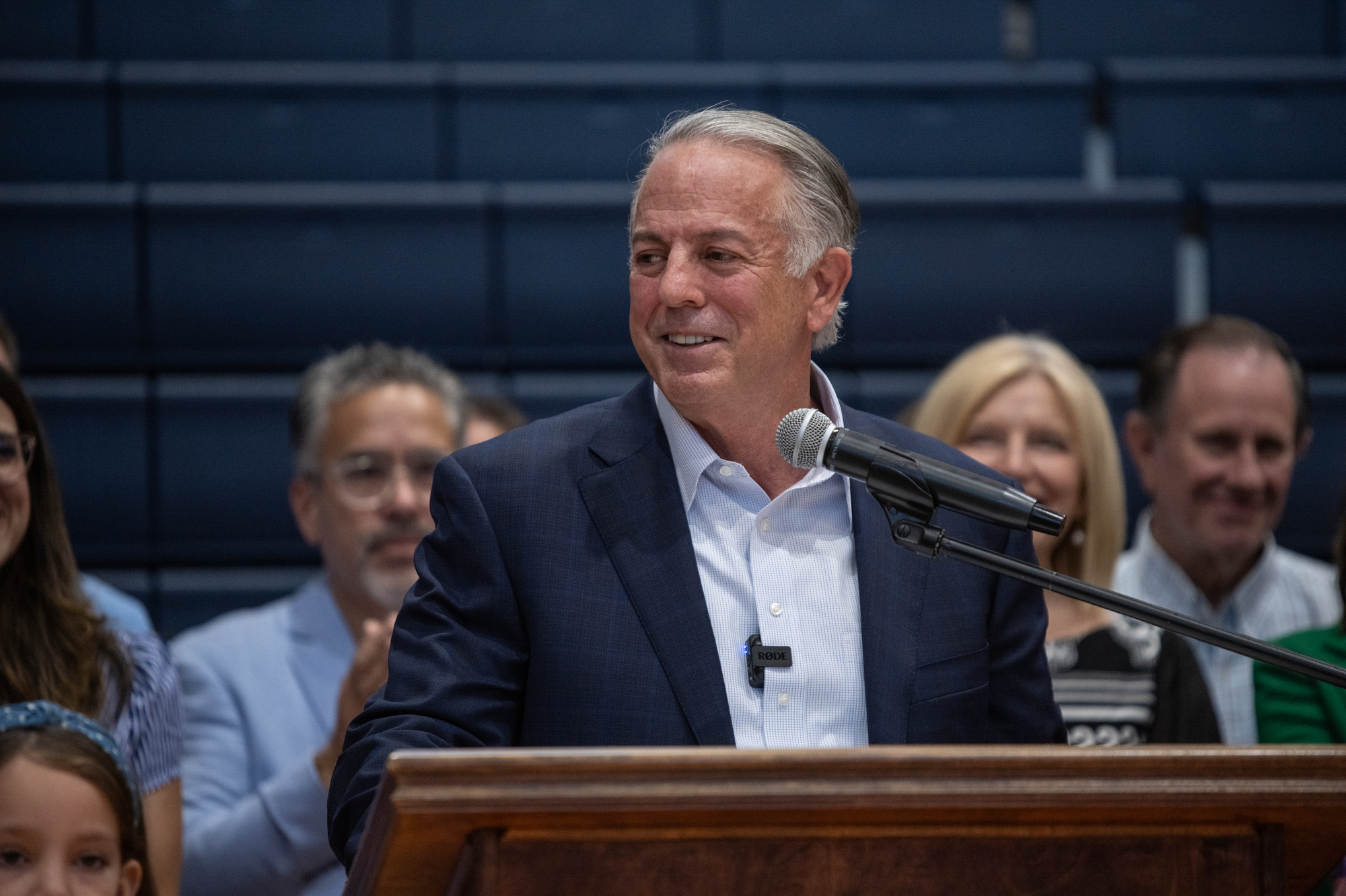Efforts to reduce greenhouse gases questioned a year after state's climate strategy taken offline

The effects of carbon emission-induced climate change are visible all around Nevada. Warming daytime and nighttime temperatures. Ongoing Colorado River water shortages. Earlier spring snowmelt. More erratic rainfall.
Democratic state lawmakers took note in 2019, passing SB254, which directed the state to try to reduce greenhouse gas emissions (compared to a 2005 baseline) by 28 percent by 2025 and 45 percent by 2030, ultimately reaching near-zero emissions by 2050.
In 2020, former Gov. Steve Sisolak’s administration released a statewide climate strategy that laid out aggressive strategies intended to lead Nevada toward a cleaner climate.
But a year into his governorship, Gov. Joe Lombardo is pursuing a different track. Lombardo, a Republican, has pulled Sisolak’s climate strategy offline, issued an executive order explicitly setting the state’s energy policy to focus on electrification and a continued use of natural gas and removed Nevada from a cohort of states committed to reducing greenhouse gas emissions in line with the 2015 Paris Climate agreement.
All the while, the state has quietly been developing a new, and different, climate plan using federal dollars that could allow Nevada access to a much larger pot of money aimed at reducing greenhouse gas emissions.
“The state is in a really great position,” Governor’s Office of Energy Director Dwayne McClinton said in an interview with The Nevada Independent.
Nevada is still reducing its carbon emissions, he said, while simultaneously embracing renewable energy and natural gas.
While the new climate plan aimed at accessing the federal dollars is being developed, there is still no publicly accessible strategy guiding the state — and officials are mum as to when the Sisolak-era climate plan will be revived, only clarifying that the two plans are different.
Nevada is not the only state without an active climate adaptation plan. But environmental watchdog groups say removing the climate strategy was a step backward because the state is failing to meet its carbon reduction goals.
“Nevada is at a pivotal point in addressing climate change,” Kristee Watson, executive director of the Nevada Conservation League, said in an emailed statement to The Nevada Independent while declining an on-the-record interview. “The state is not on track to meet its climate goals, as highlighted by last year’s greenhouse gas inventory. These findings underscore the urgency for comprehensive and effective climate strategies.”

Distinct initiatives, different timelines
In early 2023, the state received $3 million in federal funding to develop a priority climate action plan. Intended to outline ways to quickly reduce greenhouse gas emissions with a focus on low-income and disadvantaged communities, there has been little fanfare from the governor’s office about the grant since the state announced receiving the funding. A presentation on the plan was held in August and two workshops were held this month.
The timeline is tight — the plan must be turned in to the Environmental Protection Agency by March.
As a condition of the federal grant, the state must also draft another plan that includes longer-term goals for greenhouse gas reductions. That plan is due to the federal government by summer 2025, and a status report detailing updates, metrics and next steps is due in 2027.
The new plans are being drafted by the Nevada Division of Environmental Protection (NDEP) and the Governor’s Office of Energy and are designed to reduce greenhouse gas emissions statewide, improve air quality and create jobs, said Department of Conservation and Natural Resources spokeswoman Jenny Jackson. Completing the new plans will allow Nevada to apply for part of $4.6 billion in federal Climate Pollution Reduction Grants.
Despite apparent similarities, Jackson confirmed that the new climate plans being drafted are separate from the original Nevada State Climate Strategy, which will remain in what she called “draft” mode while the new plan is developed. The new plans can “complement and inform the Nevada State Climate Strategy,” she wrote in an email. However, “they are distinct initiatives, with differing timelines for implementation.”
The old climate strategy is more of an overall blueprint for the state, said Danilo Dragoni, deputy administrator for NDEP, while the new plan being drafted is a step that will set Nevada up to potentially receive a chunk of federal funding — the $4.6 billion is only open to entities that submit an initial plan to the federal government this year.

‘Under construction’
When the old climate plan was taken offline last March, it was intended to be a temporary measure, Elizabeth Ray, communications director for Lombardo, told The Nevada Independent at the time. Ray did not respond to multiple emails requesting an update on its status.
In July, the previous public information officer for the Governor’s Office of Energy doubled down and told The Indy that the strategy is “currently being reviewed and will be revised with public and stakeholder input” and that those efforts were being led by NDEP.
Jackson said in her email that NDEP staff “can’t speak to the state climate plan.” She declined to say why and did not respond to requests for clarification.
In a phone call with The Indy, Dragoni said the state climate strategy is a shared effort with multiple owners and that no one person or agency can speak for it. NDEP’s role is to provide technical support for greenhouse gas mitigation and has just a partial role in the state’s climate planning efforts, he added.
McClinton told The Nevada Independent those public meetings revising the state climate plan have not yet been held and that there is no timeline for republishing the old plan.
Meanwhile, several state websites continue to link to the old plan — simply stating "Under construction,” as they have for nearly a year.
Dragoni said public input on the new priority climate action plan will be used to inform and reshape the mothballed state climate strategy, but focus on the old strategy is on the sidelines as the state develops the plan that could unlock federal funding.
“I don’t think we are wasting time, we are just focusing our efforts on this effort,” Dragoni said. “There is a lot of technical work and outreach for the CPRG (Climate Pollution Reduction Grants) that will inform the climate strategy whenever it is going to be revived.”

Still a climate leader?
Last July, Lombardo withdrew Nevada from the U.S. Climate Alliance, the cohort of states committed to reducing greenhouse gas emissions, stating the goals of the alliance conflict with the energy policy objectives he outlined in his March executive order.
Member states draft their own climate solutions centered around the alliance’s 10 policy priorities, including greenhouse gas emission targets, electricity generation and transportation. Of the alliance’s 25 member states, 19 have statewide climate strategies in place.
In emails obtained by the Energy and Policy Institute, a pro-clean energy watchdog, Lombardo’s Chief of Staff Ben Kieckhefer stated in June that there is too much conflict between the alliance’s agenda and the administration’s energy policies for the state to remain a member.
In Lombardo’s energy-focused executive order, he called for a diversified energy portfolio that includes not just electrification and clean energy, but ongoing use of natural gas. In 2022, natural gas-fueled power plants accounted for 56 percent of the state's electricity generation and three out of every five households relied on natural gas for heating.
His executive order starkly contrasted with the state’s redacted climate strategy, which emphasized a “shifting away” from natural gas to meet the 2050 net-zero carbon goal.
But reliance on natural gas remains a strong focus under Lombardo. Eight of the state’s largest power plants by capacity are powered by natural gas.
Southwest Gas, the largest distributor of natural gas in the state, has also proven a formidable opponent to lawmakers looking to transition the state away from its reliance on natural gas.
“The previous administration was trying to push away from fossil fuel, mainly natural gas,” McClinton, a former Southwest Gas lobbyist appointed to his position by Lombardo, told The Nevada Independent. “This administration believes natural gas plays a vital role in the state decarbonizing.”
The withdrawal from the alliance has had no effect on Nevada, McClinton said, and the state is still leading the clean energy charge.
“We gained nothing from being a member, we lost nothing from not being a member,” he said. “We can be leaders in this state and not be part of an organization.”
Jermareon Williams, government affairs manager for Western Resource Advocates, disagrees.
The way for Nevada to remain a climate leader in the state “is to get that strategy [back] out there,” he said.

Emission projections and shortcomings
The average global temperature has increased nearly 2 degrees Fahrenheit since 1880. July was the hottest month worldwide in recorded history — and likely the last 120,000 years.
In Nevada, temperatures are getting hotter even faster than the global average. The state’s two largest cities, Reno and Las Vegas, remain the two fastest-warming cities in the nation.
Reno’s annual average temperature has increased 7.8 degrees Fahrenheit since 1970 — the city just experienced its fourth-warmest December since 1893. Las Vegas’ annual average temperature has increased by 5.9 degrees over that same timeframe.
Warming temperatures are just one of the many signs of the impacts of carbon emissions, which peaked in Nevada in 2005.
When the Sisolak administration released its climate strategy, it was the state’s first ever document outlining tangible steps to reduce those emissions to net-zero by 2050. Those steps included efforts such as expanding urban forestry programs; initiating a cash for clunkers program; starting a clean truck program and transitioning away from residential and commercial uses of natural gas.
Overall emissions have declined since the 2005 peak as the state shifted from primarily coal-based electricity generation to more natural gas and clean energy production. The state reduced its energy generated by coal from 51 percent to 6 percent over the past two decades.
But even as overall statewide emissions slowly decline, other emission categories are rising. Through 2043, emissions from the industrial sector are projected to increase the fastest under current policies while transportation-related emissions will continue to be the largest contributor of greenhouse gases in Nevada.
Despite this, Lombardo this month joined 15 other Republican governors in petitioning the federal government to reconsider a proposed mandate that would dramatically accelerate the nation’s electrification of vehicles.
The state is likely to fall 3.5 percent short of its 2025 reduction goal and 17 percent short of its 2030 goal, according to December estimates by NDEP.
Those shortcomings are a touch better than what the state predicted in 2020, when it forecast that Nevada would be 4 percent short of its 2025 goal and 19 percent short of its 2030 goal. But it’s not enough, according to climate advocates.
“We don’t believe Nevada is doing enough to meet the goals they’ve set with carbon emissions,” Williams said. “There was momentum with the previous strategy. We want to work with the governor's office, NDEP and [Governor’s Office of Energy]. But we have to have a foundation and know what their goals are for the state, and we haven't heard a lot from either office on what they’re looking for.”
